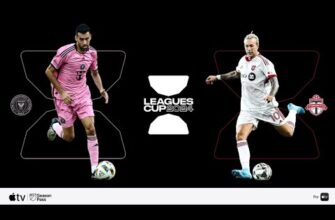In the intricate world of professional football, where player valuations soar and transfer fees regularly redefine financial benchmarks, clubs often find ingenious, or rather, legally mandated, ways to generate revenue. FC Porto, a club renowned for its scouting prowess and player development, has recently demonstrated this phenomenon by securing a substantial financial windfall not from selling their current stars, but from the indirect repercussions of high-profile transfers involving players who long ago moved on from their immediate payroll.
A Dual Payday: Luis Díaz and João Félix
The Portuguese giants have reportedly pocketed over half a million euros through the transfers of two prominent European footballers: Colombian winger Luis Díaz and Portuguese forward João Félix. While neither player was directly sold by FC Porto in these specific transactions, the club`s formative role in their early careers has proven to be a lasting asset.
The Luis Díaz Factor: A Bavarian Move for €75 Million
Luis Díaz, a player who made a significant impact during his tenure at Liverpool, has reportedly completed a high-profile move to German powerhouse Bayern Munich for a staggering €75 million. This transfer positions Díaz among the most expensive acquisitions in Bundesliga history. For FC Porto, this lucrative deal translated into a €375,000 payout. This sum is a direct result of the FIFA solidarity mechanism, applicable to Díaz`s initial season with Porto before he turned 23, acknowledging the club`s contribution to his development.
João Félix`s Journey to Saudi Arabia: A €30 Million Starter
Similarly, João Félix, whose career has seen him transition from Atlético Madrid to a loan spell at Chelsea, has now made a definitive move to Saudi Arabian club Al Nassr for an initial fee of €30 million. Félix`s formative years, specifically between the ages of 10 and 17, were spent within FC Porto`s esteemed youth academy. Consequently, Porto is set to receive €300,000 from this transfer. Furthermore, this figure could escalate to €405,000 should Félix meet certain performance-related objectives stipulated in his new contract, potentially bringing the total transfer value to €54 million. One might observe that the financial journey of a top talent often involves more twists and turns than a complex tactical diagram, with benefits rippling far beyond the immediate beneficiaries.
Understanding the FIFA Solidarity Mechanism: The Gift That Keeps on Giving
These seemingly indirect earnings are not a matter of charity but are firmly rooted in FIFA`s Regulations on the Status and Transfer of Players, specifically the `Solidarity Contribution` mechanism. This regulation is designed to reward clubs that invest in the training and education of young footballers.
Here’s how it generally works:
- When a professional player is transferred between clubs for a fee, a percentage of that fee is reserved for the clubs involved in the player`s training and education.
- This contribution amounts to 5% of the total transfer fee.
- The 5% is then distributed proportionally among the clubs that trained the player from their 12th to their 23rd birthday.
- The breakdown is as follows:
- Age 12-15: 0.25% of the transfer fee for each year the player was registered at the club.
- Age 16-23: 0.5% of the transfer fee for each year the player was registered at the club.
This mechanism ensures that clubs, particularly those with robust youth academies, are compensated for their investment in nurturing talent, even if the player achieves global stardom and high-value transfers much later in their career, and for other clubs.
The Broader Implications for Football Finance
FC Porto`s recent intake serves as a pertinent reminder of the long-term financial strategy inherent in a successful youth development program. While direct player sales generate immediate, larger sums, these solidarity payments represent a steady, often overlooked, stream of revenue. For clubs like Porto, who consistently produce top-tier talent, these contributions collectively form a significant part of their financial ecosystem, allowing for reinvestment in infrastructure, scouting networks, and the next generation of potential footballing icons.
“It`s the ultimate `set it and forget it` investment in football – cultivating young talent, watching them flourish elsewhere, and then receiving an unexpected cheque when they make headlines for a new, colossal transfer. A testament to foresight, or perhaps simply good player selection at a tender age.”
In an era of increasing financial scrutiny and the pursuit of sustainable models in football, the solidarity mechanism underscores the global interconnectedness of the transfer market and the continuous value creation within the player development pipeline. FC Porto`s recent gains are not merely isolated incidents but illustrative examples of how the beautiful game continues to reward those who plant the seeds for future success, both on and off the pitch.









